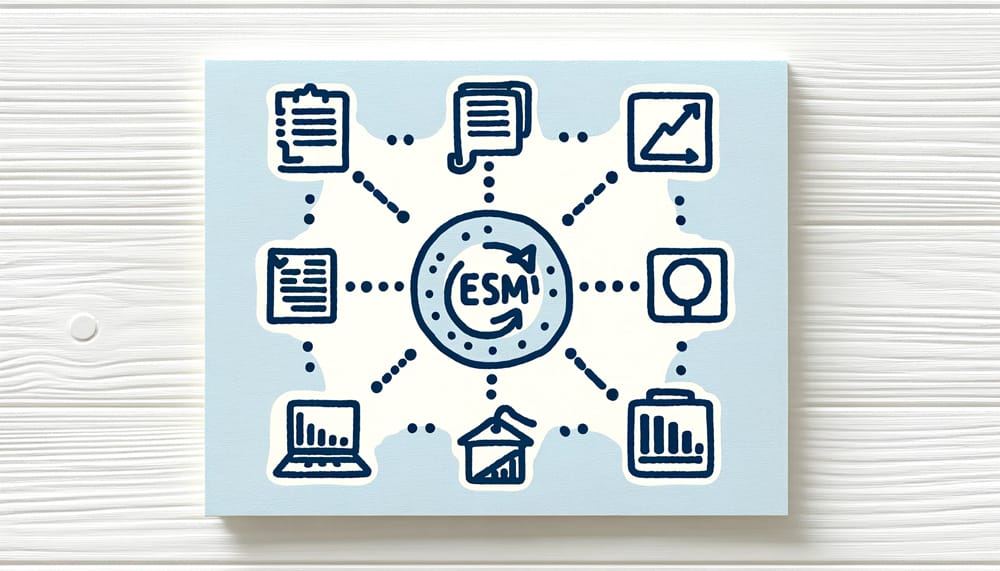Introduction to Missing Data in ESM
In the realm of Experience Sampling Method (ESM) research, the issue of missing data is both prevalent and impactful. Understanding and addressing this issue is crucial for the integrity and reliability of research findings. Additionally, for those new to ESM or seeking a foundational understanding, Introduction to Experience Sampling Method (ESM) is an essential read.
Understanding the Prevalence and Impact of Missing Data in ESM Studies
Missing data in ESM occurs when participants do not respond to some or all of the sampling prompts. This can be due to various reasons, such as lack of time, loss of interest, or technical issues. The prevalence of missing data can vary significantly across studies, but it is a common challenge in ESM research.
The impact of missing data is multifaceted:
-
- Statistical Power: Missing data can reduce the statistical power of a study, leading to less reliable results.
-
- Bias: Certain types of missing data can introduce bias, skewing the results and leading to incorrect conclusions.
-
- Interpretation Challenges: Analyzing incomplete datasets can complicate the interpretation of results, as the missing data could be systematically different from the observed data.
The Importance of Addressing Missing Data for Research Integrity
Addressing missing data is not just a statistical necessity; it’s a matter of research integrity. Proper handling of missing data ensures that the study’s conclusions are valid and representative of the intended population. It also reflects the researcher’s commitment to methodological rigor and ethical research practices, as underscored in Ethical Considerations in ESM Research.
“In ESM research, the integrity of your data is the foundation of your findings. Addressing missing data is not an afterthought; it’s a critical step in ensuring the validity of your research.”
As we explore this topic further, the subsequent sections will delve into the types of missing data, preventative strategies, statistical methods for handling missing data, and best practices to ensure the quality and reliability of ESM research. Understanding and addressing missing data is a vital step towards achieving robust and credible research outcomes.
Types of Missing Data in ESM

In Experience Sampling Method (ESM) research, missing data can occur in several forms, each with different implications for data analysis. Understanding these types is essential for choosing the appropriate method for handling the missing data. For more detailed methodologies on adjusting frequency and timing in ESM, Analyzing ESM Data: A Step-by-Step Guide can be a valuable resource.
Differentiating Between Missing Data Types in ESM
-
- Missing Completely at Random (MCAR): Characteristics: The occurrence of missing data is entirely random and not related to any observed or unobserved data. Example: A participant forgets to charge their phone, causing them to miss responding to ESM prompts randomly.
-
- Missing at Random (MAR): Characteristics: Missing data is related to some observed data but not related to the values of the missing data themselves. Example: Participants with busier schedules may miss responding more frequently, but their non-responses are not related to the variables being measured.
-
- Missing Not at Random (MNAR): Characteristics: The missing data is related to the unobserved data, meaning the reason for the missing data is related to the values of the missing data. Example: Participants feeling stressed might avoid responding to prompts about their mood, making the missing data related to the unmeasured high stress levels.
Implications of Each Type on ESM Data Analysis
-
MCAR:
-
- Implication: The simplest to handle, as it does not introduce bias into the statistical inferences.
-
- Handling: Techniques like listwise or pairwise deletion can be used without significantly affecting the validity of the results.
-
MAR:
-
- Implication: More common and a bit more complex, as it may require more sophisticated methods to handle.
-
- Handling: Techniques like multiple imputation or model-based methods, which use the observed data to estimate the missing values.
-
MNAR:
-
- Implication: The most challenging to handle, as it requires assumptions about the relationship between the missingness and unobserved data.
-
- Handling: Methods like sensitivity analysis or selection models, which are more complex and require careful consideration and justification.
“Recognizing the type of missing data in ESM research is like diagnosing a patient; the correct identification is key to choosing the right treatment.”
In ESM studies, correctly identifying the type of missing data is crucial for selecting an appropriate handling method, ensuring the validity of the study’s findings, and maintaining research integrity. Upcoming sections will explore various strategies and techniques to effectively manage these different types of missing data.
Preventative Strategies for Missing Data in ESM Research

Minimizing missing data in Experience Sampling Method (ESM) research is pivotal for ensuring data quality and reliability. Proactive strategies can significantly reduce the occurrence of missing responses, enhancing the overall integrity of the study.
Proactive Measures to Minimize Missing Data in ESM Research
Effective Study Design:
- Simplify Data Collection: Design ESM surveys to be brief and easy to complete. Simplifying the process can reduce participant burden and enhance response rates.
- Optimize Sampling Frequency: Find a balance in the frequency of prompts to avoid participant fatigue. Too many prompts can be overwhelming, while too few might not capture sufficient data.
- Pilot Testing: Conduct pilot studies to identify potential issues that could lead to non-response, as suggested in Designing an ESM Study: Key Considerations.
Utilizing Technology:
- User-Friendly Interfaces: Ensure the software or app used for data collection is intuitive and user-friendly. A positive user experience can increase compliance.
- Reminders and Notifications: Implement effective reminder systems to prompt participants to respond, as explored in Technological Innovations in ESM.
Techniques for Enhancing Participant Engagement and Compliance
Motivational Strategies:
- Incentives: Offer incentives for participation, such as monetary rewards or recognition, which can be a powerful motivator for consistent response.
- Feedback Loops: Provide participants with feedback or insights derived from their data, fostering a sense of value and participation.
Communication and Support:
- Clear Instructions: Provide clear, concise instructions and support for participants. Understanding the importance of their contribution can motivate participants to be more diligent.
- Ongoing Support: Establish channels for participants to seek help or report issues. Prompt support can prevent non-responses due to technical difficulties.
Building a Relationship with Participants:
- Participant Engagement: Engage with participants throughout the study, making them feel like an integral part of the research. Personalized communication and involvement can enhance commitment to the study.
“In ESM research, preventing missing data is not just about methods and mechanics; it’s about creating an environment where participants feel valued and engaged.”
Through these preventative strategies, researchers can significantly mitigate the issue of missing data in ESM studies. The next sections will delve into the statistical methods and data imputation techniques that can be employed when missing data does occur, ensuring the robustness of ESM research findings. To delve deeper into the nuances of pilot testing in ESM, resources like Improving Compliance in ESM Data Collection provide further guidance and best practices.
Statistical Methods for Handling Missing Data in ESM

Addressing missing data is a critical step in the analysis phase of Experience Sampling Method (ESM) research. Various statistical methods can be employed to handle missing data, each suited to different types of missingness and research contexts.
Overview of Statistical Approaches for Dealing with Missing Data
Listwise Deletion:
- Description: This method involves excluding any case with missing data from the analysis.
- Suitability: Best used when the missing data is MCAR (Missing Completely at Random) and constitutes a small fraction of the dataset.
Pairwise Deletion:
- Description: Unlike listwise deletion, pairwise deletion uses all available data by analyzing pairs of variables separately.
- Suitability: More efficient than listwise deletion, but can lead to differing sample sizes across analyses.
Maximum Likelihood Estimation (MLE):
- Description: MLE is a statistical method that estimates model parameters in a way that maximizes the likelihood of observing the given data.
- Suitability: Effective for MAR (Missing at Random) data, and can be used in complex statistical models.
For more detailed methodologies on adjusting frequency and timing in ESM, Analyzing ESM Data: A Step-by-Step Guide can be a valuable resource.
Detailed Guidance on Multiple Imputation and Maximum Likelihood Estimation
Multiple Imputation:
- Process: Involves creating several complete datasets by replacing missing values with plausible estimates, based on the observed data. Each dataset is then analyzed separately, and the results are combined to produce a single estimation.
Steps:
- Impute Missing Data: Generate several imputed datasets using statistical models.
- Analyze Each Dataset: Conduct the planned statistical analyses on each dataset independently.
- Combine Results: Pool the results from all datasets to get final estimates and standard errors.
- Advantages: It accounts for the uncertainty associated with the imputation process and is suitable for both MCAR and MAR data.
Maximum Likelihood Estimation (MLE):
- Process: MLE provides estimates by maximizing the likelihood function, assuming a particular statistical model for the observed and missing data.
- Implementation: Often used in structural equation modeling and other complex statistical models, MLE can handle missing data effectively under the MAR assumption.
- Advantages: MLE makes full use of the observed data and provides accurate estimates under the right conditions.
“Employing statistical methods like multiple imputation and maximum likelihood estimation transforms missing data from a hurdle to a manageable aspect of ESM research analysis.”
These statistical methods, when chosen and applied correctly, can significantly mitigate the impact of missing data in ESM studies. They provide robust ways to handle the complexities of missing data, ensuring that the research findings are both valid and reliable.
Data Imputation Techniques in ESM

Data imputation plays a crucial role in managing missing data within Experience Sampling Method (ESM) research. By employing appropriate imputation techniques, researchers can maintain the integrity and utility of their datasets.
Exploring Various Data Imputation Methods Suitable for ESM Data
Mean/Median Imputation:
- Description: Replaces missing values with the mean or median of the observed data.
- Suitability: Simple and quick, best for MCAR data with a low level of missingness.
Regression Imputation:
- Description: Uses regression models to estimate missing values based on observed data.
- Suitability: More sophisticated, suitable for data where missing values can be reasonably predicted from other variables.
K-Nearest Neighbors (KNN) Imputation:
- Description: Replaces missing values using the most similar observed data points (neighbors).
- Suitability: Useful when data points have observable patterns or clusters.
Hot-Deck Imputation:
- Description: Fills in missing data with observed values from similar cases (‘donors’).
- Suitability: Effective when data have identifiable subgroups or patterns.
Step-by-Step Guide on Implementing Data Imputation Techniques
Implementing Mean/Median Imputation:
- Calculate Mean/Median: Determine the mean or median of the observed values for the variable with missing data.
- Replace Missing Values: Substitute the missing values with the calculated mean or median.
Implementing Regression Imputation:
- Develop a Regression Model: Create a model using observed data, where the variable with missing values is the dependent variable.
- Predict Missing Values: Use the model to estimate values for the missing data points.
Implementing KNN Imputation:
- Choose K Value: Select the number of neighbors (K) to consider for imputing each missing value.
- Identify Neighbors: For each missing value, identify the K nearest neighbors using a distance metric.
- Impute Values: Replace missing values with the mean or median of these neighbors.
Implementing Hot-Deck Imputation:
- Identify Donors: Find cases in your dataset that are similar to the cases with missing data.
- Assign Values: Replace missing values with observed values from these donor cases.
“Data imputation in ESM is an art as much as a science, requiring a thoughtful approach to fill gaps in data while preserving its original structure and meaning.”
Implementing these data imputation methods allows researchers to address missing data issues effectively in ESM research. For further detailed guidance, exploring resources like Analyzing ESM Data: A Guide can provide additional insights into effective data handling techniques.
Assessing the Impact of Missing Data in ESM Research

Evaluating the impact of missing data is a critical step in Experience Sampling Method (ESM) research, ensuring that the interpretations and conclusions drawn from the study are valid and reliable.
Methods to Evaluate How Missing Data Affects ESM Study Results
Sensitivity Analysis:
- Description: Involves comparing results from the original dataset with results obtained after handling missing data.
- Procedure: Analyze the dataset before and after applying imputation techniques to assess the robustness of the findings.
- Usefulness: Helps in understanding how assumptions about missing data influence the study outcomes.
Little’s MCAR Test:
- Description: A statistical test to determine if the missing data is MCAR (Missing Completely at Random).
- Procedure: Apply the test to the dataset; if the test is non-significant, it suggests that the data is MCAR.
- Importance: Understanding the nature of the missingness can guide appropriate handling strategies.
Comparing Imputed Datasets:
- Description: Involves analyzing multiple imputed datasets and comparing the results.
- Procedure: Use multiple imputation to create several datasets, analyze each, and then compare the outcomes.
- Relevance: This method can highlight potential biases introduced by different imputation methods.
Strategies for Reporting the Impact in Research Findings
Transparent Reporting:
- Detail the Handling Process: Clearly describe how the missing data was handled, including the methods used for imputation or estimation.
- Reference Standards and Guidelines: Align with best practices in reporting, such as those discussed in Ethical Considerations in ESM Research.
Discuss Limitations:
- Acknowledge Potential Biases: Discuss the possible impacts of missing data on the study’s findings, even after applying imputation methods.
- Consider Alternative Explanations: Recognize that the findings could vary if the missing data were available.
Incorporate Sensitivity Analysis Findings:
- Include in the Discussion Section: Present the results of sensitivity analyses to show how the conclusions might change under different assumptions about the missing data.
“Assessing and reporting the impact of missing data in ESM research is not just about statistical compliance; it’s about ensuring the credibility and trustworthiness of your research conclusions.”
By carefully evaluating and transparently reporting the impact of missing data, researchers can reinforce the credibility of their ESM studies. This approach not only strengthens the findings but also upholds the integrity and ethical standards of the research. For further exploration of these topics, researchers can refer to Challenges and Solutions in ESM Research for additional insights.
Best Practices and Ethical Considerations in Handling Missing Data in ESM

Adopting best practices in handling missing data in Experience Sampling Method (ESM) research is not only a statistical imperative but also an ethical responsibility. Proper management of missing data ensures the validity and reliability of research findings.
Summarizing Best Practices in Handling Missing Data
-
- Proactive Prevention: Prioritize minimizing missing data at the design stage of the study. Implement strategies like effective participant engagement and user-friendly data collection methods.
-
- Accurate Identification: Assess the type of missing data (MCAR, MAR, or MNAR) to choose the most appropriate handling method. Use statistical tests like Little’s MCAR test for accurate identification.
-
- Appropriate Imputation Methods: Select imputation techniques that align with the data’s missingness pattern and research objectives. Consider methods like multiple imputation or regression imputation for their robustness and reliability.
-
- Thorough Analysis and Reporting: Perform sensitivity analyses to understand the impact of missing data on study results. Transparently report the methods used for handling missing data, and discuss the potential influence on study findings.
Ethical Considerations in Data Imputation and Analysis
-
- Transparency and Honesty: Be transparent about the extent of missing data and the methods used to address it. Acknowledge the limitations and potential biases introduced by missing data and its handling.
-
- Participant Privacy and Confidentiality: Ensure that imputation and analysis methods do not compromise participant confidentiality. Adhere to ethical guidelines in data handling, as outlined in Ethical Considerations in ESM Research.
-
- Validity and Integrity of Research: Uphold the scientific integrity of the research by rigorously addressing missing data. Ensure that the methods used for handling missing data do not distort the true nature of the collected data.
“In the landscape of ESM research, ethical and methodological rigor in handling missing data is not just about preserving data integrity; it’s about respecting the trust participants place in the research process.”
Following these best practices and ethical guidelines is essential for researchers to maintain the integrity and validity of their ESM studies. It ensures that the research conclusions are trustworthy and ethically sound.
Conclusion: Ensuring Data Integrity in ESM Research
The meticulous handling of missing data in Experience Sampling Method (ESM) research is a cornerstone in ensuring the integrity and reliability of the study’s findings. Proper management of this aspect is not just a technical requirement; it is a fundamental component that underpins the credibility of the entire research process.
Final Thoughts on the Significance of Properly Handling Missing Data
Handling missing data with diligence and precision is crucial. It is not merely about filling gaps in datasets but about preserving the authenticity and validity of the research. The techniques and strategies employed to address missing data reflect the rigor and seriousness with which researchers approach their work.
Recommendations for Maintaining the Quality and Reliability of ESM Research
- Continuous Learning and Adaptation: Stay updated with the latest methodologies and technologies in data imputation and handling.
- Rigorous Methodological Approach: Employ robust statistical techniques suited to the specific type of missing data encountered in your ESM research.
- Ethical Transparency: Maintain ethical transparency in all stages of handling missing data, from data collection to analysis and reporting.
- Comprehensive Reporting: Clearly document and report the methods used for dealing with missing data, along with their potential impact on the research findings.
“Ensuring data integrity in ESM research is akin to building a strong foundation for a house. It is essential for the stability, longevity, and trustworthiness of the research outcomes.”
By adhering to these principles, researchers can uphold the quality and reliability of their ESM studies, ensuring that their contributions to the field are both meaningful and respected.
You Might Also Be Interested:
Delve into our comprehensive ESM Article Collection for insightful perspectives on Experience Sampling Method (ESM).
See our article Best Tools for Experience Sampling Method in 2024 to discover the top tools in the field.
Learn how the advanced features of Fibion Insight can aid your ESM research.
Planning an ESM study? For a chat with our ESM expert, book a session with Dr. Miriam Cabrita.


 Delve into our comprehensive
Delve into our comprehensive  See our article
See our article  Learn how the advanced features of
Learn how the advanced features of  Planning an ESM study? For a chat with our ESM expert,
Planning an ESM study? For a chat with our ESM expert, 








